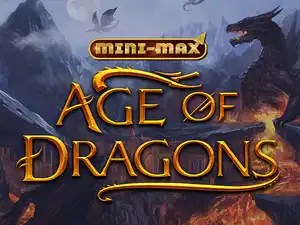Wes Anderson’s Asteroid City is what happens when a filmmaker’s world of wonder and whimsy becomes a prison. Love Anderson or hate him, he at least has a gift for creating mini universes of eccentric style; it’s usually relatively painless to drop in for a bit and see what he’s up to. But Asteroid City—a story-within-a-story about a group of smartie kids who come to the desert with their families for a science-award ceremony, only to be quarantined there when an alien touches down and steals a rock—is so stiff and aggressively stylized that it seems to have been designed only for hardcore Andersonites. Everyone else should proceed with caution.
The story in Asteroid City is framed as an anthology-style televised play—a little Playhouse 90, a little Twilight Zone—hosted by Bryan Cranston, channeling Rod Serling. Kicking off the show, he introduces us to the writer of the material we’re about to see: it’s Edward Norton’s Conrad Earp, seen typing away in some western-themed hideaway, wearing an admittedly awesome smoking jacket dotted with jacquard broncos. (Too bad Asteroid City doesn’t have its own shopping app.) This framing section, to which Anderson returns throughout the film, is rendered in old-school-TV black-and-white. The play-within-the-show is painted in vivid souvenir-postcard hues. This is how you know what’s reality and what’s fantasy, relatively speaking.
In Asteroid City, the televised play, set in 1955—this would be the stuff in color, for those trying to follow along at home—Augie Steenbeck (Jason Schwartzman) is a very recently widowed war photographer who has brought his four children to the small desert town of the movie’s title for a special Asteroid Day event. His oldest, Woodrow (Jake Ryan), will be receiving an award. The younger ones, a triple threat of quirky junior witches (Ella, Gracie and Willan Faris) are just along for the ride, but Augie has not yet told his children that their mother has recently died. The details of her death are unclear, but it seems she’s been “away” from the family for a while—a convenient elision for a filmmaker who doesn’t really like to deal with feelings.
Also arriving in Asteroid City are suave movie star Midge Campbell (Scarlett Johansson) and her daughter Dinah (Grace Edwards). Dinah will also be receiving a medal during the event (these will be bestowed by an authoritative Army general, played by Jeffrey Wright), and she and Jake will strike up a tentative teenage romance. Midge and Augie, with their respective kids, happen to have booked rental cabins right across from other. Through their facing windows, they speak to one another in crisply delivered self-centered phrases, and somehow fall in love, or at least tumble into an affair. This development is the emotional core of Asteroid City, to the extent that it has one.
Other performers doodling through Asteroid City include, but are not limited to, Adrien Brody, Liev Schreiber, Hong Chau, Hope Davis, Steve Carell, Maya Hawke and Willem Dafoe. Tilda Swinton plays a scientist in a page boy. Rupert Friend is a winking, pedal-steel-guitar-playing cowboy. The alien rock thief is Jeff Goldblum, though you don’t see much of his face. Tom Hanks plays a gruff, sensible father-in-law with a gun stuck in the waistband of his golf pants. At one point I squinted and saw Bob Balaban.
The clown car of a movie into which these actors are jammed is, admittedly, handsomely presented. In one of the black-and-white scenes, we see Johansson’s Midge Campbell riding in a train car, her blonde hair styled in a Vertigo swoop, wearing an approximation of Kim Novak/Madeleine’s pearl-gray suit. Clever! The sets, built on location in Spain, include rusty-toned desert landscapes and an old-timey train station. (The production designer is Anderson regular Adam Stockhausen.) The movie’s color sequences include a riot of turquoise greens, reddish browns and wowser blues: there are gleaming lunch counters, aqua-toned enameled metal desks, sleek linoleum-tile arrangements, automobiles with gently rounded contours. The movie’s best invention may be a vending machine proffering sparkling martinis; if only this were a real thing.
Yet even the glorious colors of Asteroid City become eyeball-numbing after a while, and the novelty of its Tinkertoy sensibility wears off practically within the first 10 minutes. Anderson, who wrote the script after conceiving the idea with Roman Coppola, certainly has smarty-pants credentials: one of the black-and-white sequences is a vivid fantasy of a ’50s Actors Studio session. Can you spot the guy who’s probably modeled on John Garfield? Anderson’s affection and enthusiasm for a world that no longer exists is one reason to love him.

Yet even as Anderson purports to delight his audiences, he always holds them at arm’s length. He’s not the warmest of filmmakers; there’s an inherent exclusivity in his style. Many of his fans don’t seem to mind that, and probably even like it—he can make you feel like part of a secret club. But Asteroid City, as extravagant and hermetic as one of King Ludwig’s crazy castles, is more excessively mannered than any other Wes Anderson picture. Late in the movie, one of the story’s actor characters, struggling to grasp the material he’s trying to perform, protests that he still doesn’t understand the play. “It doesn’t matter,” he’s told. “Just keep telling the story.” Eventually, though, you’ve got to know when it’s time to get the hell out of Dodge.